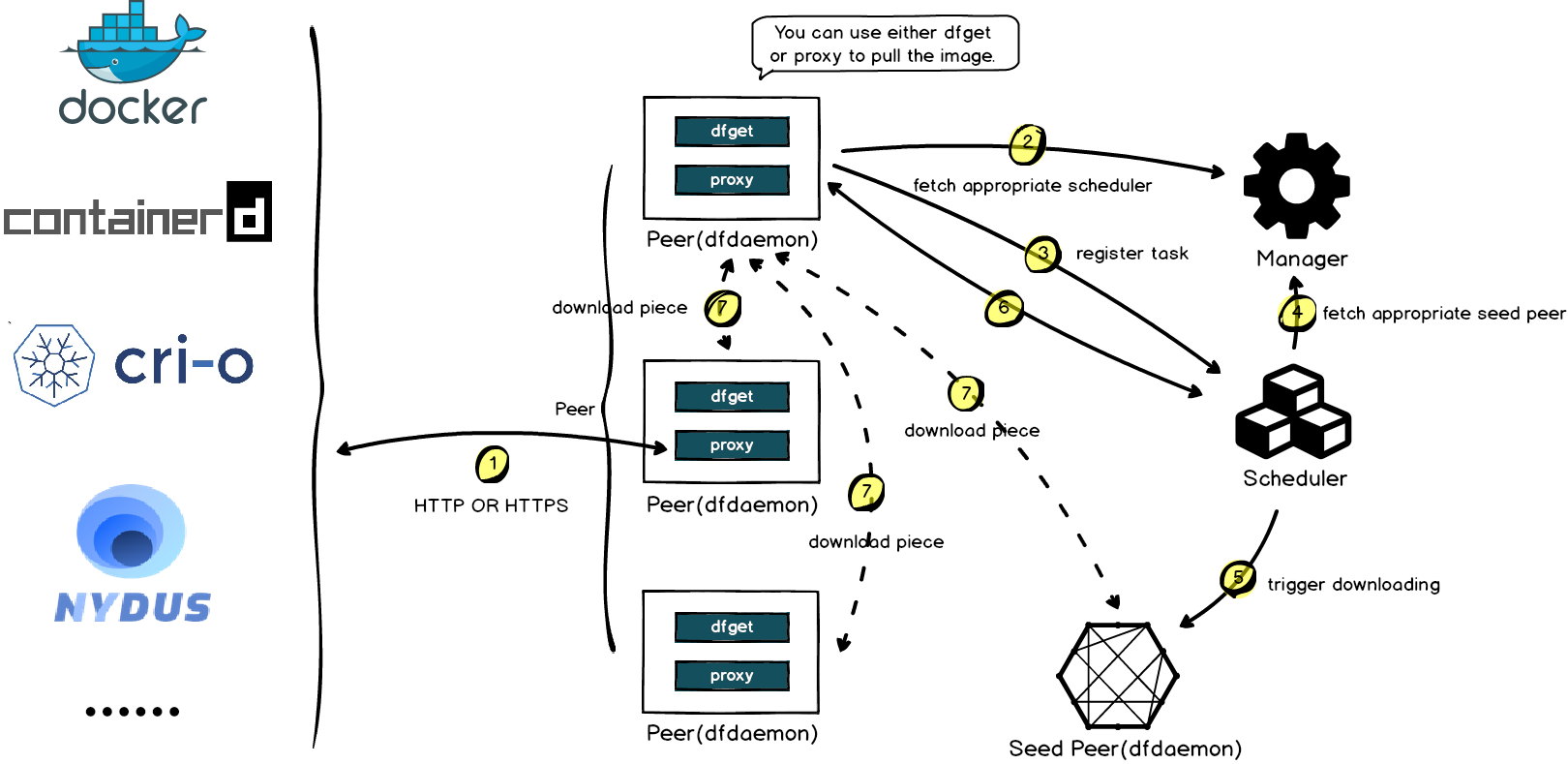What Is Dragonfly?
Introduce
Dragonfly is an open-source p2p-based image and file Distribution System. It is designed to improve the efficiency and speed of large-scale file distribution. It is widely used in the fields of application distribution, cache distribution, log distribution and image distribution.
At this stage, Dragonfly has evolved based on Dragonfly1.x. On the basis of maintaining the original core capabilities of Dragonfly1.x, Dragonfly It has been comprehensively upgraded in major features such as system architecture design, product capabilities, and usage scenarios.
Features
Dragonfly provides a one-stop solution for large-scale file distribution. The basic capabilities provided by Dragonfly include:

- P2P File Distribution:Use P2P technology for file transfer, improve download efficiency, and save bandwidth across IDC.
- Non-intrusive:Supports multiple containers for distributing images.
- Host-level speed limit:Support for host-level limits speed.
- Consistency:Make sure all downloaded files are consistent.
- Isolate abnormal peers:Automatically isolate abnormal peers to improve download stability.
- Ecosystem:Harbor can distribute and preheat images based on the Dragonfly. Image acceleration based on Nydus container runtime can use Dragonfly for data distribution.
Evolution
Dragonfly has been selected and put into production use by many Internet companies since its open source in 2017, and entered CNCF in October 2018, becoming the third project in China to enter the CNCF Sandbox. In April 2020, CNCF TOC voted to accept Dragonfly as an CNCF Incubating project. Dragonfly has developed the next version through production practice, which has absorbed the advantages of Dragonfly1.x and made a lot of optimizations for known problems.

Dragonfly has unparalleled advantages in large-scale file distribution. Dragonfly introduces many new features:
New Architecture:
Dragonfly is composed of four parts: Manager, Scheduler, Seed Peer and Peer. Dfdaemon can be used as seed peer and peer. The independence of Scheduler and The decoupling of scheduler and seed peer eliminates the mutual influence between scheduling and storage IO. At the same time, it supports seed peer plugin and can be deployed on demand. In addition, the whole system is based on the GRPC framework which greatly improves the distribution efficiency of P2P.
More Application Scenarios:
Dragonfly supports different types of storage sources, such as HDFS, OSS, NAS, etc.
Product Capability:
Dragonfly supports configuration management, data visualization, etc. through the management and control system, making the system easier to use.
Architecture
Dragonfly includes four parts Manager, Scheduler, Seed Peer and Peer, refer to Architecture.
- Manager: Maintain the relationship between each P2P cluster, dynamic configuration management and RBAC. It also includes a front-end console, which is convenient for users to visually operate the cluster.
- Scheduler: Select the optimal download parent peer for the download peer. Exceptions control Dfdaemon's back-to-source.
- Seed Peer: Dfdaemon turns on the Seed Peer mode can be used as a back-to-source download peer in a P2P cluster, which is the root peer for download in the entire cluster.
- Peer: Deploy with dfdaemon, based on the C/S architecture, it provides the
dfgetcommand download tool, and thedfget daemonrunning daemon to provide task download capabilities.
